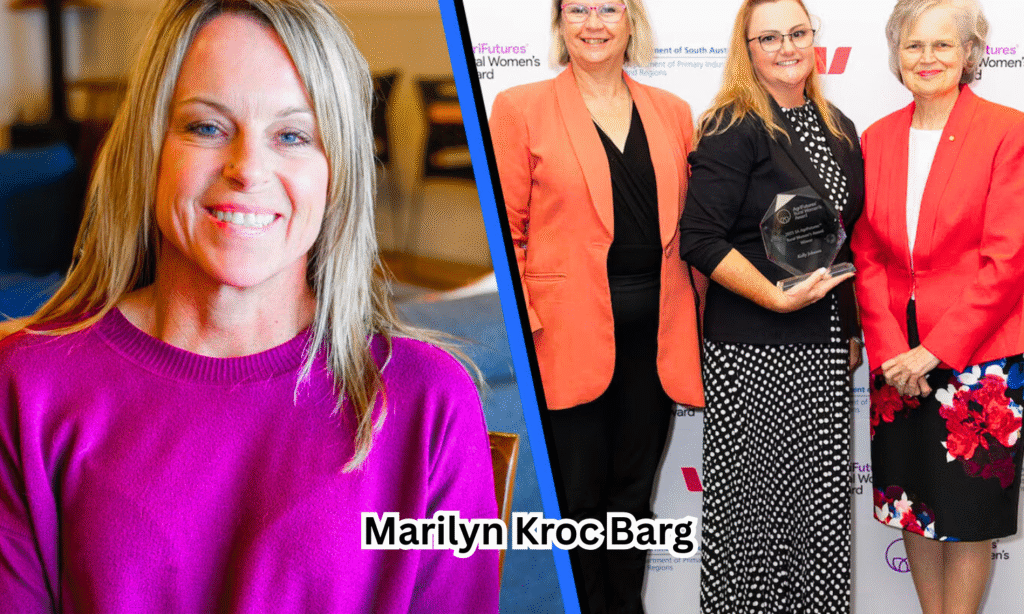Marilyn Kroc Barg, born October 15, 1924, in Chicago, Illinois, remains one of the lesser-known figures in the history of McDonald’s yet carries a story rich with individuality, philanthropy, and personal resilience. As the only child of Ray Kroc, the man who transformed McDonald’s into a global empire, Marilyn had access to wealth and influence, but she chose a path markedly different from the public eye and corporate boardrooms. Her upbringing in Oak Park during the Great Depression imbued her with a sense of responsibility, humility, and practicality, traits that would shape her life in subtle but profound ways. Unlike many heirs to family fortunes, Marilyn’s identity was never overshadowed by her father’s accomplishments, yet her contributions and personal choices reflected a quiet dedication to making a difference.
Early Life and Family Background
Growing up as the daughter of Ray Kroc and Ethel Janet Fleming, Marilyn’s early years were framed by both privilege and societal expectation. Her father’s career as a traveling salesman and eventual acquisition of the McDonald brothers’ restaurant in 1961 brought financial security, but Marilyn experienced the normal challenges of childhood, learning perseverance and adaptability. Being the only child, she was both shielded and expected to uphold the family’s standards of conduct. While public documentation of her youth is limited, family anecdotes and secondary sources suggest she was intelligent, observant, and compassionate—qualities that would later define her philanthropic endeavors. Her life was marked by a delicate balance between the weight of legacy and the pursuit of personal purpose.
Education and Personal Interests
Though records of Marilyn’s formal education are scarce, it is evident that she had a lifelong curiosity and a strong affinity for private pursuits. She was reportedly drawn to equestrian activities and arts-related endeavors, suggesting a personality that valued beauty, discipline, and personal enrichment. Marilyn did not participate in the public business operations of McDonald’s, choosing instead to cultivate a life that reflected her values and interests. This separation from corporate affairs allowed her to define herself beyond the familial brand. Her hobbies were more than leisure—they represented her philosophy of living authentically and investing time and energy into areas she personally valued, rather than simply following a path laid by inherited fortune.
Marilyn Kroc Barg – Biography Table
| Attribute | Details |
|---|---|
| Full Name | Marilyn Janet Kroc Barg |
| Date of Birth | October 15, 1924 |
| Place of Birth | Chicago, Illinois, USA |
| Date of Death | September 11, 1973 |
| Age at Death | 48 years |
| Father | Ray Kroc |
| Mother | Ethel Janet Fleming |
| Spouse(s) | Sylvester Nordly Nelson (divorced), Walter James Barg |
| Children | Linda Smith |
| Net Worth | Approximately $1 million (at time of death) |
| Occupation | Philanthropist, Private Life |
| Known For | Philanthropy, family legacy of McDonald’s |
| Physical Appearance | Elegant and poised, understated style |
| Public Life | Largely private, focused on family and charitable work |
| Philanthropic Focus | Education, children’s health, community support |
| Social Media Presence | None (maintained privacy during her lifetime) |

Marriage and Family Life
Marilyn’s personal life was rooted in privacy, a trait she maintained throughout her adulthood. She first married Sylvester Nordly Nelson in 1949, though the marriage ended in divorce, and later wed Walter James Barg in 1960. Together, Marilyn and Walter had a daughter, Linda Smith, who became the center of her later life. While public exposure was limited, Marilyn’s dedication to family reflected her deep sense of loyalty and care. Her approach to motherhood and marriage emphasized stability and support, contrasting with the high-profile lifestyle often associated with the heirs of prominent figures. In her family life, Marilyn demonstrated that legacy is not only about wealth but also about the values, ethics, and emotional foundations passed down to the next generation.
Philanthropy and Social Contributions
Marilyn Kroc Barg’s philanthropic work represents one of the most significant aspects of her life. She focused her resources on education, children’s health, and community enrichment, often acting quietly behind the scenes. Her involvement in causes such as the Ronald McDonald House Charities underscores her commitment to improving the lives of others without seeking recognition. Marilyn understood that meaningful impact often comes from sustained effort and discretion rather than public acknowledgment. Her contributions have benefited countless families over the decades, highlighting a legacy built not on business achievements but on empathy, care, and long-term societal benefit.
Financial Legacy and Net Worth
At the time of her death on September 11, 1973, Marilyn Kroc Barg’s net worth was estimated at around $1 million, a figure that reflects financial prudence and the careful management of her inheritance. Unlike some heirs who focus on wealth accumulation, Marilyn prioritized the use of her resources to support philanthropic goals and family needs. In contrast, her father’s fortune, valued at over $600 million at the time of his death in 1984, illustrates the magnitude of the empire she was connected to. Marilyn’s approach to her finances demonstrates a conscious effort to separate personal values from material excess, emphasizing responsible stewardship and the importance of using resources for meaningful purposes.
Physical Appearance and Personal Style
While Marilyn Kroc Barg was rarely photographed publicly, descriptions suggest she had a poised and elegant appearance, often understated and refined rather than ostentatious. Her style reflected the values she carried throughout her life: grace, composure, and quiet dignity. She valued authenticity over flamboyance, aligning her external presentation with her internal philosophy. This understated elegance became a metaphor for her life—visible enough to be recognized, but never seeking the spotlight. Her choice to maintain privacy about her physical appearance underscores her focus on substance over superficial recognition.
Legacy and Influence
Marilyn Kroc Barg’s story is one of subtle yet lasting influence. While she never sought media attention or corporate fame, her actions—particularly in philanthropy—have had enduring effects. She serves as an example of how heirs to major fortunes can live purposefully and contribute meaningfully without relying on public acclaim. Marilyn’s life reminds us that legacy is multifaceted, encompassing not only financial inheritance but also values, charitable impact, and personal integrity. Her story encourages reflection on the balance between family expectations and personal choice, illustrating that impact is often measured by quiet actions rather than headline-grabbing achievements.
Conclusion
Marilyn Kroc Barg lived a life that was both connected to one of the world’s most recognizable brands. distinct in its focus on personal values, philanthropy, and privacy. From her early years in Chicago to her role as a devoted mother and supporter of charitable causes, Marilyn’s narrative is one of resilience, intentionality, and care. Though her name may not appear in business textbooks or corporate histories, her legacy endures in the lives she touched and the causes she championed. She remains a reminder that influence and accomplishment are not solely defined by public recognition but by the quiet, meaningful ways in which one shapes the world around them.
FAQs
Who was Marilyn Kroc Barg?
Marilyn Kroc Barg was the only daughter of Ray Kroc, the founder of McDonald’s. She lived a private life focused on family and philanthropy.
What was Marilyn Kroc Barg’s net worth?
At the time of her death in 1973, her net worth was estimated at around $1 million. She prioritized philanthropy over accumulating personal wealth.
Did Marilyn Kroc Barg work in McDonald’s?
There is no public record of her holding a formal role in McDonald’s. She remained mostly independent of her father’s business operations.
What were her main philanthropic efforts?
Marilyn supported causes related to children’s health, education, and community development. Her contributions helped improve the lives of countless families.
Why is Marilyn Kroc Barg significant?
She represents a legacy beyond wealth, focusing on meaningful impact through private philanthropy and personal integrity. Her story highlights purpose over public recognition.


